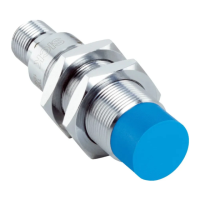The IO-Link devices are each connected to the IO-Link master in a serial, bidirectional
point-to-point connection via an IO-Link interface (port). This arrangement does not
represent a fieldbus. Different variants of IO-Link master are available. The IO-Link
masters usually consist of decentralized, higher-level fieldbus gateways or input cards
for the backplane bus of the controller used.
To enable an IO-Link device to communicate with the controller, the IO-Link master and
the respective IO-Link device must be integrated into the controller. This is done via the
hardware configuration in the engineering tool of the control manufacturer.
To facilitate integration, SICK provides sensor-specific device description files (IODD =
IO-Link Device Description) for the IO-Link devices for free download on the product
page.
In addition to process data (cyclical data transmission), the IO-Link master and device
can also exchange device data (acyclical data transmission; parameters, identification
data and diagnostic information) depending on the device. To use this function, the
IO-Link master needs the sensor-specific device description file (IODD).
Not all control system manufacturers support the use of IODDs. If non-system IO-Link
masters are used, the IO-Link sensor can also be integrated manually. This is done by
entering the relevant sensor parameters directly during hardware configuration.
To ensure that the IO-Link sensor can be easily integrated into the control program,
SICK also provides function blocks for many control systems. These function blocks
facilitate, among other things, the reading and writing of the individual sensor parame‐
ters. The devices also support the interpretation of the process data supplied by the
IO-Link sensor.
You can find the function modules in the Support Portal: supportportal.sick.com
8.3.1 Process data
The devices offer 6 different modes for reading/writing transponders. The modes can
be selected in the process data:
•
No command (0x00) - Default, no data output
•
Auto-read (0x01)
•
Auto-write (0x02)
•
Read (0x03)
•
Write (0x04)
•
ReadUID (0x05)
To read and write transponder data, one of the following modes must be selected:
Auto-Read (0x01), Auto-Write (0x02), Read (0x03), Write (0x04).
The relevant mode can be set via “CMD” (byte 0, bit 5-7) in the “Process Data OUT”.
If the device was able to successfully run the requested command, the “Ready flag”
inverts (“Process Data IN”).
When switching to another mode (“CMD”), the command must be started with “START”
= 1 (“Process Data OUT”).
8.3.1.1 Read UID Mode
In Read UID mode, a UID is transmitted in each cycle. If no transponder is situated in the detection range, the last
read UID is displayed.
The device starts to read out the UID as soon as the mode has been set in the process data. The “Ready flag”
(“Process Data IN”) inverts with every piece of process data.
In addition to the UID, the antenna status, error codes, alarms, RSSI and the entry time stamp and exit time stamp
are transmitted.
8 OPERATION
36
O P E R A T I N G I N S T R U C T I O N S | RFH5xx 8025309/1KDE/2023-12-19 | SICK
Subject to change without notice

